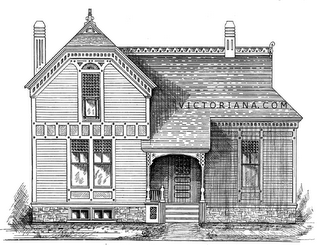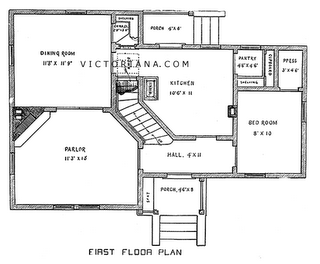by Carolyn T.
According to Janette Thomas Greenwood in
The Gilded Age: A History of Documents, Homer Plessy boarded the train in New Orleans and sat in the “whites only” first-class section and was asked by the conductor to move to the “colored only” car; when Plessy refused, he was arrested (Greenwood, 101). This discussion of the events suggests that Homer Plessy was easily identifiable as African American and her discussion of Louisiana suggests that this state’s ideas about racial identity were like the rest of the South at that time. Both suggestions conflict with what is known about the case and Louisiana’s social and state understandings of race. This omitted information is crucial to understanding the complexities of
Plessy v. Ferguson and the decision’s historical and current relevance.
Most people tend to associate
Plessy v. Ferguson with the upholding of Jim Crow laws in the South or the phrase “separate but equal.” (1) However,
Plessy v. Ferguson also dealt with identity politics or, more specifically, the question of color. In 1892, Homer Plessy bought a first-class ticket on the East Louisiana Railway to travel from New Orleans to Covington, Louisiana. At that time, Louisiana’s statutes mandated racial segregation. When Mr. Plessy sat down in the whites only car, his presence there was not disputed because he “looked” white. According to the court’s documents, Plessy was not visually discernible as being of African descent (
Plessy, 1896:538 [headnote]). According to Mr. Plessy's legal argument, because he considered himself white, he took a seat in the car reserved for white passengers.
This legal argument contradicted his actions somewhat in both that he was working with the Committee to change the law (although not necessarily as Greenwood contends) but also when he stood up in the whites only car and announced to the conductor that he had African ancestry. This declaration provided the opportunity for conductor to “identify” Plessy as being of African descent. In other words, if Mr. Plessy had not said anything about his ancestry his “whiteness” would have been assumed.
The assumption of “whiteness” within Louisiana, however, was a precarious thing to do at the time. As Mark Golub states in “
Plessy as ‘Passing’: Judicial Responses to Ambiguously Raced Bodies in
Plessy v. Ferguson,” “To appreciate the complexity of issues of racial classification in the case, one must consider the location and context of the legal dispute, in New Orleans, a city thoroughly marked by its strong Creole tradition” (2005:568).
Louisiana was originally a Spanish colony. It later was colonized Bourbon France, Great Britain, the Republic of West Florida, Napoleon and, finally, the United States. The cultural factors of this particular type of colonization (as opposed to strictly British colonization) contributed to high rates of interracial sexual contact (Spear, 1999:37). A combination of French and Spanish laws also contributed to a large free African American and mulatto communities (2) in possession of legal, social, and economic rights that were not seen within the British colonies (Sterkx, 1972:26-34). The difference in the colonization of Louisiana led to a different view of and among what would be considered today the African American population within Louisiana.
So, while Homer Plessy took his case to the United States Supreme Court to question the constitutionality of racial segregation in Louisiana and elsewhere by arguing that the state law went against the Thirteenth and Fourteenth Amendments to the US Constitution, it also attempted to call into question the arbitrariness of legal racial definitions (Davis, 1991:8-9, 52-53, 68). However, given Louisiana’s racial caste system and that Plessy and the members of the "Citizens' Committee to Test the Constitutionality of the Separate Car Law" were mulatto caste (rather than Negro caste), is it safe to assume the Committee or Plessy were fighting for the equality of all African Americans under the law or merely attempting to claim whiteness for themselves while leaving Jim Crow firmly in place?
Complicating this reading, the court discussed the lack of visual discernment of Plessy’s racial identity within their decision. Yet, three paragraphs after this remark, the court states, “A statute which implies merely a legal distinction between the white and colored races —
a distinction which is founded in the color of the two races, and which must always exist so long as white men are distinguished from the other race by color [italics mine] — has no tendency to destroy the legal equality of the two races, or re-establish a state of involuntary servitude” (
Plessy, 1896:538). It appears that the more the court attempts to defend its position the more it has to disappear Homer Plessy from the case and the text. This disappearing of Plessy is duplicated by those teaching
Plessy in the classroom through the use of books like Greenwood’s; how and/or does this color (all puns intended) society’s collective understanding of “race,” “blackness,” “whiteness,” etc. in this country?
NOTES:
(1) A Jim Crow law is “a law enacted or purposely interpreted to discriminate against blacks, such as requiring separate restrooms for blacks and whites,” according to
Black’s law dictionary, 7th ed., ed. Bryan A. Garner (St. Paul, MN: West Group, 1999), 840. For an in-depth discussion of Jim Crow laws and analysis of legal racial definitions in the United States, see F. James Davis,
Who is black? One nation’s definition (University Park: Pennsylvania State University Press, 1991).
(2) While not separate and necessarily distinct, the African American (or Negro) community and the mulatto community had different social structures and networks that reflected the racial hierarchy of Louisiana.
REFERENCE LIST:
Davis, F. James.
Who Is Black: One Nation’s Definition. University Park, PA: Pennsylvania State University Press, 1991.
Golub, Mark. "
Plessy As "Passing": Judicial Responses to Ambiguously Raced Bodies in
Plessy V. Ferguson." Law & Society Review 39, no. 3 (2005): 563-600.
Louisiana, State of.
"Louisiana History." Accessed 20 Apr. 2006.
Plessy V. Ferguson, 163 U.S. 537 US Supreme Court (1896).
Spear, Jennifer M. "They Need Wives': Mestissage and the Regulation of Sexuality in French Louisiana, 1699-1730." In
Sex, Love, Race: Crossing Boundaries in North American History, edited by Marth Elizabeth Hodes, 35-59. New York: New York University Press, 1999.
Sterkx, H.E.
The Free Negro in Ant-Bellum Louisiana. Madison, NJ: Associated University Press, 1972.





